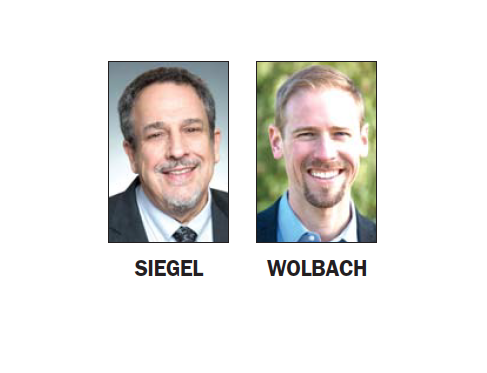
GUEST OPINION
BY LENNY SIEGEL AND CORY WOLBACH
As early as April 1969, Stanford University’s Moulton Committee — made up of students, faculty and staff — found that the university and corporations on its land had created a housing deficit of several thousand units.
Even back then, low- and moderate-income employees and students had to commute significant distances. The university did little to address the problem, and that’s a major reason why, according to the Santa Clara County Civil Grand Jury, Palo Alto has three times as many jobs as employed residents.
Stanford owns 8,180 acres of land, 4% larger than all of Mountain View. This includes the academic campus, which is located in unincorporated Santa Clara County, and the Stanford Research Park, Stanford Shopping Center and hospital complex, all of which lie within Palo Alto’s city boundaries.
This year, Stanford is proposing a new General Use Permit to Santa Clara County to expand its daytime population — students, faculty, and staff — by about 10,000. While many of these people would reside in 3,150 on-campus housing units/beds, it would also create a demand for 2,425 off-campus residences in an already tight housing market.
In response to criticism, the county Planning Department is studying two new alternatives, one of which would instead plan for 5,699 new units/beds. This would be a responsible approach to our regional housing crisis, but the county studies warn that residential growth could make local traffic even worse.
Two areas for housing
There is at least a partial solution: Build apartments and condos in the research park and shopping center to serve not only the growing campus population but many of the thousands of people who work in those areas.
Stanford could convert portions of the 700-acre research park and shopping center from a suburban office park and an auto-based shopping mall into mixed-use, medium-density neighborhoods to make it easier for university staff and students, as well as corporate employees, to walk, bike, or take transit to work.
It would make it possible for young families to afford Palo Alto living while reducing the waste — of time and energy — and pollution associated with the regional commute. This will require cooperation between the university, the county, and the city of Palo Alto.
Mountain View is doing this in North Bayshore, East Whisman, and San Antonio. Mountain View isn’t just planning for housing. It is creating neighborhoods that include apartments and condos, schools, retail, parks and transit.
By providing housing near workplaces, Mountain View will reduce regional vehicle miles traveled—and thus greenhouse gases. By designing areas to support car-light living, it hopes to reduce local traffic.
Walkable neighborhoods
Stanford’s successful transportation demand management program works well to reduce commute traffic, but it will take the creation of complete, walkable neighborhoods to cut down on the traffic caused by new homes. Beyond that, commercial employers and apartment owners can institute incentive programs for people to live near where they work, although simple convenience might be enough to achieve that without subsidies.
Mountain View has set a goal that 20% of the homes in its new planning areas will be affordable — that is, made available at rents based on the income of low-income and perhaps moderate-income people, with a firm requirement that builders include at least 15% at their own expense. This strategy acknowledges that most new apartments in this area are expensive, but it also means that the more market-rate apartments are built, the more affordable units are generated.
By increasing densities in areas where the new buildings don’t directly impact lower density neighborhoods, the high cost of land is defrayed.
Stanford appears to be open to the idea. Stanford official Catherine Palter told the Post, “We also will continue to explore adding housing on our lands outside the academic campus, such as at the Stanford Shopping Center and in the Stanford Research Park.”
Also, Palo Alto’s recently updated Comprehensive Plan allows housing in the Research Park and Shopping Center (Comprehensive Plan Programs L2.4.2, L2.4.3, L5.1.1.)
It’s time to start planning.
Lenny Siegel is the Mayor of Mountain View. In 1969-70 he was a leader of Grass Roots, a campus organization working to reform Stanford land use. Cory Wolbach is a member of the Palo Alto City Council. The opinions expressed here are their personal views. They do not necessarily represent their respective city councils.

If you build homes at the shopping center, where will the kids in those homes go to school? Whether or not homes are built there, a new school needs to be located somewhere in the west part of campus, and should be built at Stanford’s expense.
Two more sites should be considered for housing — Town & Country and the Palo Alto Square Office Towers. T&C is made up of buildings from the 50s. Tear it down and put up 4-story buildings with retail on the ground floor (keeping the area a shopping center) and homes on the upper 3 floors. At Palo Alto Square build housing on the expansive parking lot. Parking can go underground.
In the transition between University Presidents a generation of bureaucratic officials have run amok and proven themselves both unethical and unable to embody any sense of social good. It is like they all took introduction to economics 101 and didn’t bother to even read the entire book at that.